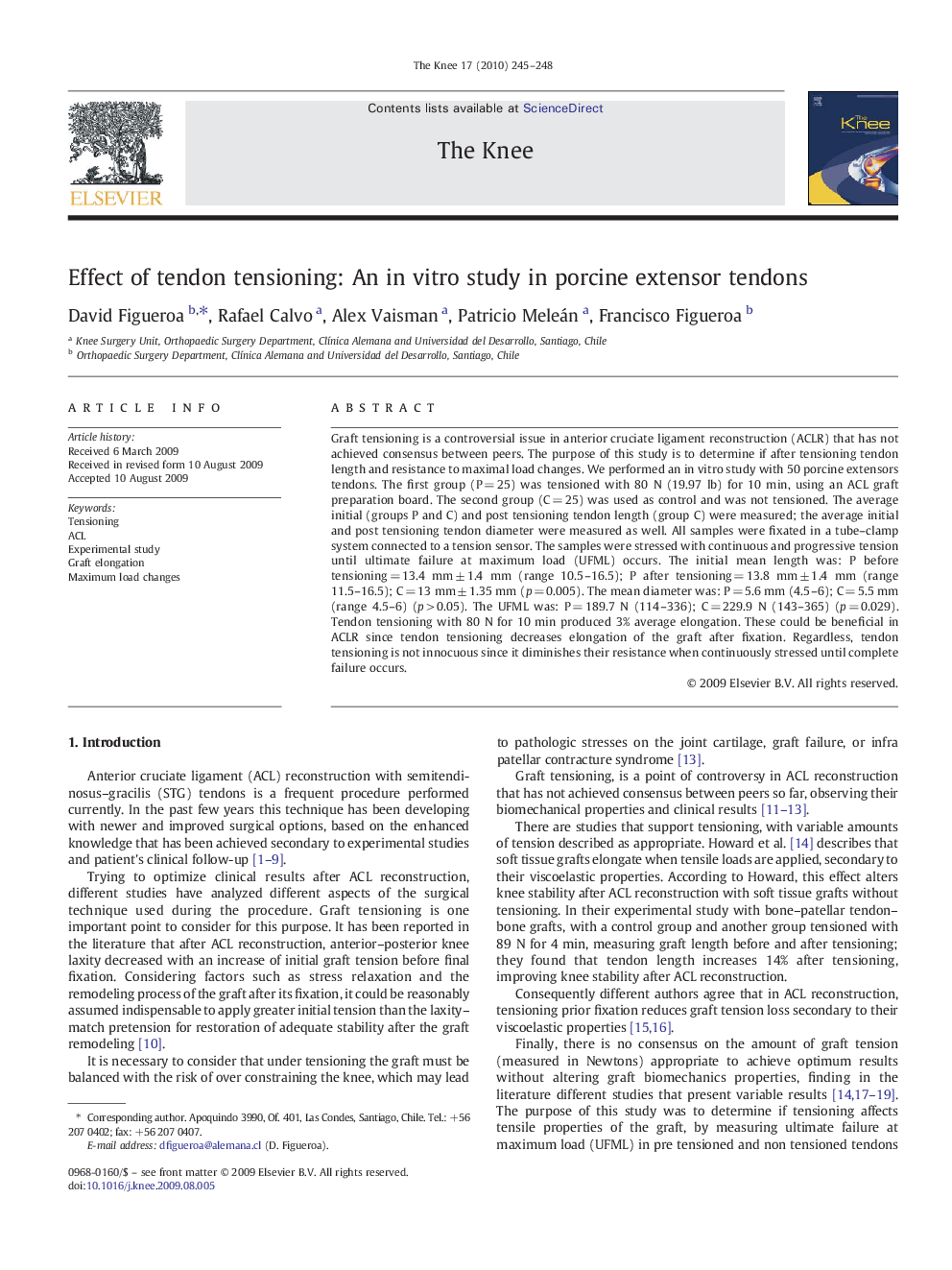| Article ID | Journal | Published Year | Pages | File Type |
|---|---|---|---|---|
| 4077967 | The Knee | 2010 | 4 Pages |
Graft tensioning is a controversial issue in anterior cruciate ligament reconstruction (ACLR) that has not achieved consensus between peers. The purpose of this study is to determine if after tensioning tendon length and resistance to maximal load changes. We performed an in vitro study with 50 porcine extensors tendons. The first group (P = 25) was tensioned with 80 N (19.97 lb) for 10 min, using an ACL graft preparation board. The second group (C = 25) was used as control and was not tensioned. The average initial (groups P and C) and post tensioning tendon length (group C) were measured; the average initial and post tensioning tendon diameter were measured as well. All samples were fixated in a tube–clamp system connected to a tension sensor. The samples were stressed with continuous and progressive tension until ultimate failure at maximum load (UFML) occurs. The initial mean length was: P before tensioning = 13.4 mm ± 1.4 mm (range 10.5–16.5); P after tensioning = 13.8 mm ± 1.4 mm (range 11.5–16.5); C = 13 mm ± 1.35 mm (p = 0.005). The mean diameter was: P = 5.6 mm (4.5–6); C = 5.5 mm (range 4.5–6) (p > 0.05). The UFML was: P = 189.7 N (114–336); C = 229.9 N (143–365) (p = 0.029). Tendon tensioning with 80 N for 10 min produced 3% average elongation. These could be beneficial in ACLR since tendon tensioning decreases elongation of the graft after fixation. Regardless, tendon tensioning is not innocuous since it diminishes their resistance when continuously stressed until complete failure occurs.
